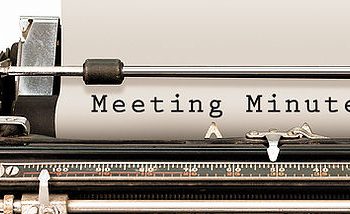 May 2024
May 2024
Our entire approach to meetings and meeting minutes requires rethinking.

Those meeting minutes produced after a meeting are designed to hide much of what goes on at the meeting. They provide no idea as to what was really discussed, strenuous objections or concerns. Meeting minutes, to the condo board, are not a form of disclosure. They are protection against opposition and litigation.
Meeting minutes are flawed yet the only way to learn something of a condo board’s deliberations and decisions.
Insights from the civil rights movement in the 1960s provide a better approach for ensuring meetings and meeting minutes are effective.
Protest marches and other actions in the 1960s were decided and planned in sessions where protest leaders were encouraged to disagree with each other. Their decisions and actions resulted in dramatic improvements through nonviolent assembly. They provided a lasting example of how to encourage improvement and enact lasting change.
 Condominium communities depend on meetings. People sit around a table or by virtual means to try and get things done. Unfortunately, we are not very good at meetings. We fail to prepare, lead or participate effectively. There is unnecessary conflict rather than discussion.
Condominium communities depend on meetings. People sit around a table or by virtual means to try and get things done. Unfortunately, we are not very good at meetings. We fail to prepare, lead or participate effectively. There is unnecessary conflict rather than discussion.
Civil rights leaders prepared well for their meetings and used them to develop action plans they could implement. They maintained meticulous records detailing, among other things, lengthy dissents. Meetings went on for hours, sometimes days, while disagreements were discussed and examined. People were risking their lives so civil rights leaders focused on developing a path forward rather than unanimity or majority vote. Meetings were focused on the realities of the day. Brutal honesty was more important than personal agenda. Their success was because the focus was always on efficient problem solving.
Success of the civil rights movement was evident in their successful marches, demonstrations, boycotts, and other protests despite overwhelming odds. They solved the problem of segregation.
Detailed minutes now shed light on how the civil rights movement developed their strategies and worked with others. The same could not be said of minutes from condo board meetings which are intended, if not to deceive, then to gloss over issues. There is rarely recognition of disagreements, dissent or dispute. It is nearly impossible to know how individuals have voted or their reasons for doing so.
When it comes time to re-elect specific directors, nobody knows where an individual stands on the issues of the day or how they previously voted. Sparse minutes, which may protect against potential litigation, make it overly difficult for owners to get a sense of how their home is managed and who is best qualified to serve as an elected director.
 Fixing meetings and meeting minutes is an important and necessary step in improving condominium community governance.
Fixing meetings and meeting minutes is an important and necessary step in improving condominium community governance.







